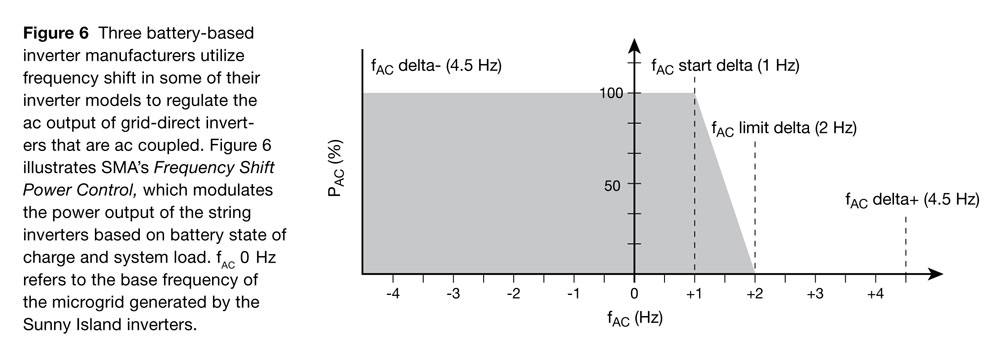Frankman60
Member
During the simulated grid outage test I found that my Panasonic Inverter type microwave oven was running slowly (half speed). Is that because it has an inverter? Our other GE built in microwave oven worked fine.
You can install our site as a web app on your iOS device by utilizing the Add to Home Screen feature in Safari. Please see this thread for more details on this.
Note: This feature may not be available in some browsers.
- Induction Stove in the kitchen - Apparently the stove electronics don't like 66 Hz power.

Where did you see 66Hz? I'd be surprised if it's that high. Most inverters that use frequency shifting only go up to ~62Hz and that's unlikely to have any noticeable effects. The tolerance for grid-tie inverters is SUPER-tight. 59.3 - 60.5 is the band defined by UL1741. You might have something else going on... voltage?
I got it from here:
And once the battery level in the Powerwalls drops a bit, the frequency returns to normal:
That's really odd... did you check against utility frequency to make sure your meter is reading correctly? Since no grid-tie inverter can operate >62Hz I don't understand why it would run at 66Hz...
The info here: Powerwall/Solar Edge behavior in power outage
sounds promising. I'll have to check my frequencies again as I've had an update since the previous pictures were taken.

Brown-outs are bad. One of the things we learn is to turn-off/unplug/breaker-disconnect our important devices when doing house electrical testing.I should have used another word instead of “inoperable”. One of my thermostats and zone control board were destroyed during the test to see if the PWs could start the AC compressor during a grid outage.
That is amazing. I want more numbers. My imagination flowers with the following what-if, and I want to know if the numbers make sense:I'm confused. I didn't know a compressor could work off an inverter. Well, it's the type of thing I would think of if I were studying ways to improve something like that, so I'm not mad about it, but I haven't heard of it yet. Let's see if search brings up anything.
I see in the pictures of that multi split that it says "INVERTER" on the external unit. Exciting!
I want to calculate numbers to see if I can run that thing in our home and spend less than our gas heater. Our gas bill is enormous ($70/month or more) and my financial situation putting back my planned investment to turn our heating into electric has me in a bind for that, but if it's really this cheap, I could bite the bullet a LOT sooner. For our home, we may need a bigger unit with more stations, but that's whatever; that supplier seems to have setups for that too. It looks hokey and isn't visually compatible with our forced air system, so that's a problem.
Wow. I count my lucky strikes. During my testing, no electronics failed. I stopped testing, though, for many reasons.Brown-outs are bad. One of the things we learn is to turn-off/unplug/breaker-disconnect our important devices when doing house electrical testing.
I've lost a bit more appliances while testing a 240v upgrade, :-/
what happens when it doesnt "fire up"? Do powerwalls shutdown due to overload? If so, what is the restart process?
When I say "fire up" I mean the AC condenser.
At no point in my experiments did the powerwalls stop producing power or shut down.
Without solar, and 100% on battery power the house browns out (even with a properly rated and installed SureStart)
When the house browns out the thermostat (EcoBee) reboots (due to low voltage) and the call for cooling stops so everything returns to normal as soon as the thermostat reboots.
In my testing however, I did notice that if the solar is producing that plus the batteries has enough power to turn over the AC condenser and we're off to the races. Once the AC is started the batteries can run it without issue.
This is a workable solution for me.
During an extended outage if it's hot (there is usually sun) I can turn on the AC during the day when things are producing and just keep it on to pull the house down really cold for the evenings.
Fingers crossed that I won't have to test it
You mentioned that solar plus PW energy is enough to start the AC condenser. Do you know how many kWs are needed from the solar for this to happen?
I think I have a similar situation with an AC compressor with a 135 LRA and 2 PWs. Presently I see a “brown out” like you mentioned when trying to start the AC on PW power only. I haven’t tried it when their is significant solar energy being produced (say above 3 kWs). I haven’t decided whether to try the SureStart or move the AC to the non backed up loads panel yet.


